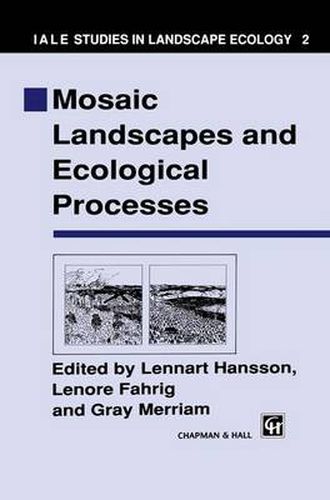Readings Newsletter
Become a Readings Member to make your shopping experience even easier.
Sign in or sign up for free!
You’re not far away from qualifying for FREE standard shipping within Australia
You’ve qualified for FREE standard shipping within Australia
The cart is loading…






This title is printed to order. This book may have been self-published. If so, we cannot guarantee the quality of the content. In the main most books will have gone through the editing process however some may not. We therefore suggest that you be aware of this before ordering this book. If in doubt check either the author or publisher’s details as we are unable to accept any returns unless they are faulty. Please contact us if you have any questions.
This series presents studies that have used the paradigm of landscape ecology. Other approaches, both to landscape and landscape ecology are common, but in the last decade landscape ecology has become distinct from its predecessors and its contemporaries. Landscape ecology addresses the relationships among spatial patterns, temporal patterns and ecological processes. The effect of spatial configurations on ecological processes is fundamental. When human activity is an important variable affecting those relationships, landscape ecology includes it. Spatial and temporal scales are as large as needed for comprehension of system processes and the mosaic included may be very heterogeneous. Intellec tual utility and applicability of results are valued equally. The Inter national Association for Landscape Ecology sponsors this series of studies in order to introduce and disseminate some of the new knowledge that is being produced by this exciting new environmental science. Gray Merriam Ottawa, Canada Foreword This is a book about real nature, or as close to real as we know - a nature of heterogeneous landscapes, wild and humanized, fine-grained and coarse-grained, wet and dry, hilly and flat, temperate and not so temper ate. Real nature is never uniform. At whatever spatial scale we examine nature, we encounter patchiness. If we were to look down from high above at a landscape of millions of hectares, using a zoom lens to move in and out from broad overview to detailed inspection of a square meter we would see that patterns visible at different scales overlay one another.
$9.00 standard shipping within Australia
FREE standard shipping within Australia for orders over $100.00
Express & International shipping calculated at checkout
This title is printed to order. This book may have been self-published. If so, we cannot guarantee the quality of the content. In the main most books will have gone through the editing process however some may not. We therefore suggest that you be aware of this before ordering this book. If in doubt check either the author or publisher’s details as we are unable to accept any returns unless they are faulty. Please contact us if you have any questions.
This series presents studies that have used the paradigm of landscape ecology. Other approaches, both to landscape and landscape ecology are common, but in the last decade landscape ecology has become distinct from its predecessors and its contemporaries. Landscape ecology addresses the relationships among spatial patterns, temporal patterns and ecological processes. The effect of spatial configurations on ecological processes is fundamental. When human activity is an important variable affecting those relationships, landscape ecology includes it. Spatial and temporal scales are as large as needed for comprehension of system processes and the mosaic included may be very heterogeneous. Intellec tual utility and applicability of results are valued equally. The Inter national Association for Landscape Ecology sponsors this series of studies in order to introduce and disseminate some of the new knowledge that is being produced by this exciting new environmental science. Gray Merriam Ottawa, Canada Foreword This is a book about real nature, or as close to real as we know - a nature of heterogeneous landscapes, wild and humanized, fine-grained and coarse-grained, wet and dry, hilly and flat, temperate and not so temper ate. Real nature is never uniform. At whatever spatial scale we examine nature, we encounter patchiness. If we were to look down from high above at a landscape of millions of hectares, using a zoom lens to move in and out from broad overview to detailed inspection of a square meter we would see that patterns visible at different scales overlay one another.